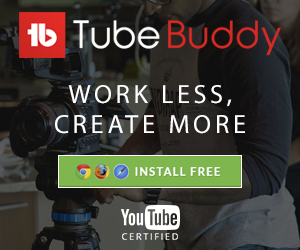Introduction
When optimizing your videos for YouTube, tags play a crucial role in making your content discoverable by your target audience by including relevant and specific tags, which can help videos rank higher in search results and attract more views, likes, and subscribers. This article will help you optimize your YouTube tags to help you outrank your competitors and reach a wider audience.
Understanding YouTube Tags
YouTube tags are keywords or phrases that describe the content of your videos. They help YouTube understand what your videos are about and index them accordingly. When someone searches for a keyword or specific phrase on YouTube, the platform uses tags to match the user's query with relevant videos. Therefore, including appropriate and particular tags can help videos rank higher in search results.
Best Practices for YouTube Tags:
Use specific and relevant tags
Using specific and relevant tags can help your videos reach a more targeted audience. For example, if your video is about "how to make vegan lasagna," using tags such as "vegan lasagna recipe," "vegan pasta," and "vegan lasagna" can help your video reach people who are interested in vegan recipes.
Use long-tail keywords
Long-tail keywords are longer and very specific phrases people use to search for particular topics on YouTube. Using long-tail keywords in your tags can help videos rank higher and attract more views; For example, using tags such as "how to make vegan lasagna without cheese," "vegan lasagna with tofu ricotta," and "vegan lasagna with cashew cream" can help your video rank higher for specific search queries a lot quicker.
Use your competitors' tags
Analyzing your competitors' tags helps you identify relevant tags you have missed. You can use tools such as TubeBuddy or VidIQ to see what tags your competitors are using and include them in your videos' tags. However, make sure to only use tags that are relevant to your content and avoid spammy or irrelevant tags.
Use variations of your tags
Using variations of your tags can help your videos reach a wider audience. For example, if your video is about a "vegan lasagna recipe," using tags such as "vegan pasta dish," "healthy vegan dinner," and "vegan Italian cuisine" can help your video rank higher for different search queries as long as you are focusing on relevancy, which is one of the factors that are important when ranking youtube videos.
How many tags should a YouTube video have?
YouTube allows you to use up to 500 characters for your video tags, so make sure to use as many relevant tags as possible. However, avoid using irrelevant or spammy tags, which can harm your video's rankings and credibility, and also avoid keyword stuffing in your video description, which is basically where you just post all your keywords down at the bottom of the description, which do you no good so there is no special number just focus on the most relevant tags.
Conclusion
Optimizing your YouTube tags is crucial for making your videos discoverable by your target audience, and when you Follow the best practices we outlined in this article can help your videos rank higher in search results, attract more views, likes, and subscribers, and ultimately grow your YouTube channel. Remember to use specific and relevant tags, long-tail keywords, competitors' tags, variations of your tags, and as many relevant tags as possible. Good luck with your YouTube optimization journey.


Social Plugin